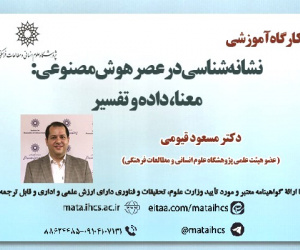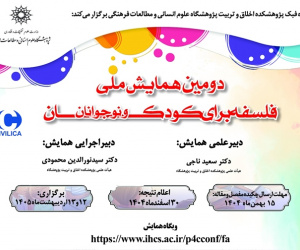تبیین نقش تحولات فرهنگی و معماری هند برشکل گیری معماری رمانتیک در نمای بناهای دولتی شهر زاهدان (دورۀ پهلوی اول) (مقاله علمی وزارت علوم)
درجه علمی: نشریه علمی (وزارت علوم)
آرشیو
چکیده
کشور هند همسایه کهن ایران است و پیوندهای فرهنگی دو کشور از دیرباز برقرار مانده اند؛ در دوران حکومت پهلوی اول این کشور به دلایل مختلفی، نقش ملموسی در شکل گیری معماری شهر های جنوب شرق ایران به خصوص شهر زاهدان داشته است. معماری نیز در طول تاریخ همواره پیوندی مستحکم با عوامل فرهنگی داشته و تحولات بروز یافته در این زمینه ، اثرات مشهودی بر معماری گذاشته است. شناخت و اهمیت چگونگی اثرگذاری این جریان و تحولات فرهنگی- معماری در هند و انعکاس ظهور آن ها بر معماری شهر زاهدان موضوعی است که در این پژوهش به آن پرداخته می شود. ازاین رو پرسش اصلی پژوهش این است که تحولات فرهنگی و معماری هند در عصر پهلوی اول با چه مؤلفه و ویژگی هایی بر معماری رمانتیک شهر زاهدان اثر گذاشته است؟ این پژوهش از نوع تاریخی- تفسیری است و با استناد به اسناد تاریخی و برداشت های میدانی و روش توصیفی- تحلیلی به نقش این جریان ها بر پیدایش رمانتیک و بروز شاخصه های کالبدی آن بر معماری دوره پهلوی اول شهر زاهدان می پردازد. نتایج نشان می دهند معماری زاهدان در عصر پهلوی اول، از رمانتیسم هندی متأثر است و به کارگیری خردمندانه مضامین آن در معماری این دوران در شهر زاهدان، نشان از ارتباطات با کشورهای همسایه در جغرافیای مذکور به نحو مستقیم یا غیرمستقیم دارد؛ ارتباطاتی که به موجب آن تحولات فرهنگی و معماری توانسته اند بر جان و کالبد معماری شهری در ایران رخنه کرده و آثارش به وضوح دیده شود به نحوی که مهم ترین شاخص های رمانتیسم، طبیعت گرایی با بهره گیری از مصالح بومی و ارتباط با محیط و طبیعت، توجه به احساسات و عواطف انسانی ازطریق استفاده از نور، رنگ و تناسبات خاص فضاها، تأکید بر داستان و روایت با به کارگیری نمادهای روایتی از داستان های تاریخی، ایده آل گرایی و باستان گرایی به واسطه ایجاد فضاهای ایده آل و نوگرایی ازطریق استفاده از روش های نوین در معماری بناهای دولتی زاهدان به نمایش در آمدند.Explaining the Role of Cultural and Architectural Changes in India on the Development of Romantic Architecture in the Facades of Government Buildings in Zahedan (Pahlavi I Period)
India has always been an important cultural neighbor of Iran, both near and far. During the reign of the First Pahlavi, this country had a significant role in shaping the architecture of the southeastern cities of Iran, particularly Zahedan for various reasons. Architecture has historically maintained a strong connection with cultural factors, and the developments that have occurred in this field have had noticeable effects on architecture. Understanding the significance of how these cultural and architectural transformations in India have influenced the architecture of Zahedan is the subject of this writing. Therefore, the main research question is: What components and characteristics define the Romantic architecture of Zahedan, influenced by the cultural and architectural transformations of India? This research is of a historical-interpretive nature and, based on historical documents and field observations, will analyze the role of these movements in the emergence of Romanticism in the architecture of Zahedan and the manifestation of physical characteristics in the architecture of this city during the First Pahlavi period through a descriptive-analytical method. The results of the research indicate that the architecture of Zahedan during the First Pahlavi era was influenced by Indian Romanticism, and the wise application of its themes in the architecture of this period in Zahedan reflects connections with neighboring countries in the mentioned geography, either directly or indirectly. These connections have allowed cultural and architectural transformations to penetrate the essence and structure of urban architecture in Iran and visibly affect it. The most important characteristics of Romanticism, such as nature-oriented design using local materials, a focus on human emotions and feelings through the use of light, color, and specific spatial proportions, an emphasis on storytelling and narrative through the use of symbolic representations from historical tales, idealism and classicism through the creation of ideal spaces, and modernity through the application of innovative methods in the architecture of government buildings in Zahedan, have been prominently displayed.








